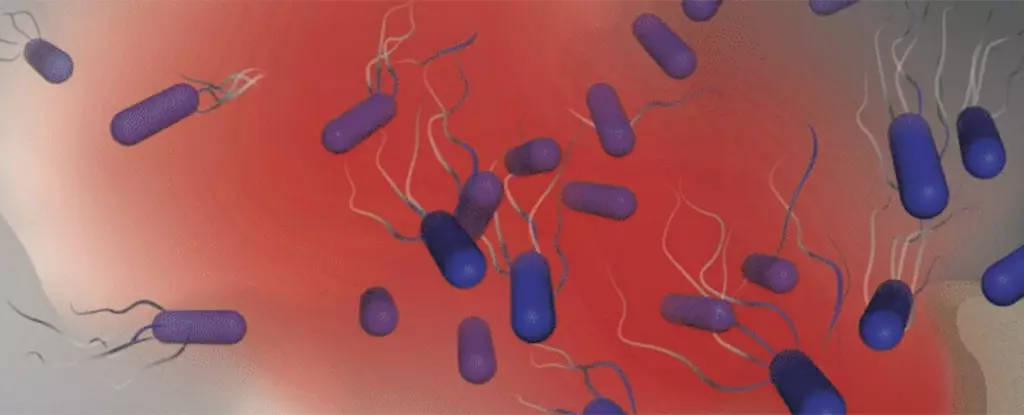A groundbreaking study by researchers from Washington State University and the University of Oregon has revealed a fascinating phenomenon known as ‘bacterial vampirism.’ This discovery sheds light on particular types of bacteria that are mysteriously drawn to human blood, a phenomenon that can have grave consequences, leading to fatal infections. The team’s findings highlight how these deadly bacteria are irresistibly attracted to serum, the liquid component of blood, due to the rich nutrients and energy it provides. This revelation raises important questions about the implications of this bacterial attraction, especially for individuals with irritable bowel disease (IBD), where intestinal bleeding can serve as a gateway for gut bacteria to enter the bloodstream.
The implications of this study extend beyond mere scientific curiosity. The researchers discovered that bacteria that cause bloodstream infections actually possess the ability to sense a specific chemical in human blood and actively swim towards it. This innate attraction to serum poses a significant threat to human health, as bloodstream infections can quickly turn deadly. The team’s use of a customized device for injecting minute amounts of fluid and a high-powered microscope allowed them to observe the interactions between bacteria and blood with unprecedented clarity. Strains of three bacteria notorious for causing fatal infections, namely Salmonella enterica, Escherichia coli, and Citrobacter koseri, were found to exhibit a strong affinity for human serum.
Moreover, the researchers identified key biological interactions underlying this bacterial vampirism. It appears that the amino acid serine acts as a chemical cue that these bacteria can detect, target, and consume using specific protein receptors. Astonishingly, these bacteria exhibit a rapid response to the presence of blood, as evidenced by their swift movement towards it, which occurred in under a minute in experimental conditions. This prompt and robust attraction to serum underscores the urgency of further exploring how bacterial sensing mechanisms can be leveraged for potential therapeutic interventions.
Interestingly, the types of bacteria implicated in this study belong to the family Enterobacteriaceae, which have been associated with conditions such as gastrointestinal bleeding and sepsis, particularly in the context of IBD. The researchers postulate that these bacteria might exploit the internal bleeding often observed in individuals with IBD as a means of survival and proliferation, thereby exacerbating the risk of fatalities. Given that IBD affects approximately 1.3 percent of the US population, equating to 3.1 million individuals, understanding the underlying mechanisms of bacterial vampirism could have far-reaching implications for managing chronic diseases and mitigating associated health complications.
Looking ahead, the researchers emphasize the potential of their findings to inform the development of novel therapeutic strategies aimed at disrupting the ability of bacteria to detect and utilize blood sources. Immunologist Siena Glenn underscores the significance of this research, stating that by unraveling how bacteria sense and respond to blood, researchers may pave the way for the creation of new drugs that target this critical aspect of bacterial behavior. While the notion of ‘bacterial vampirism’ may evoke mythical imagery, the reality is far more nuanced and scientifically intriguing, hinting at a potential avenue for advancing medical interventions to combat deadly infections.
The discovery of bacterial vampirism represents a paradigm shift in our understanding of bacterial behavior and its implications for human health. By delving into the intricate mechanisms governing bacterial attraction to human blood, researchers have unearthed a wealth of insights that may ultimately translate into life-saving treatments. As we continue to unravel the mysteries of the microbial world, the study of bacterial vampirism stands as a testament to the enduring fascination and complexity of the unseen forces that shape our health and well-being.


Leave a Reply